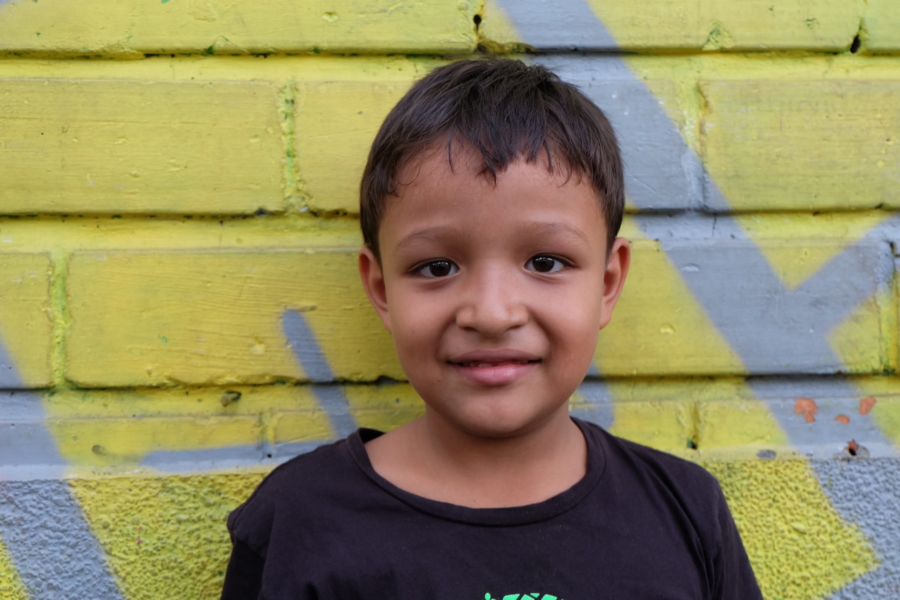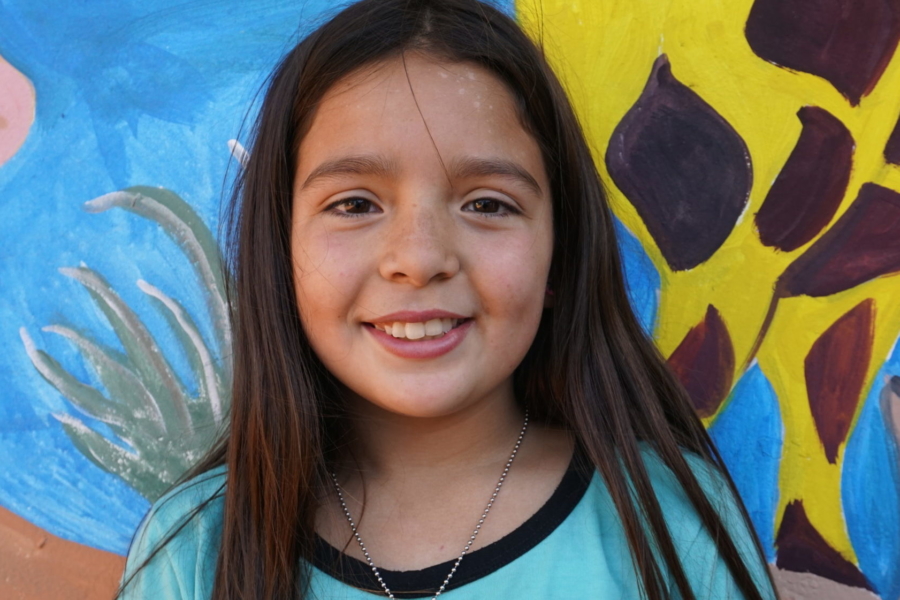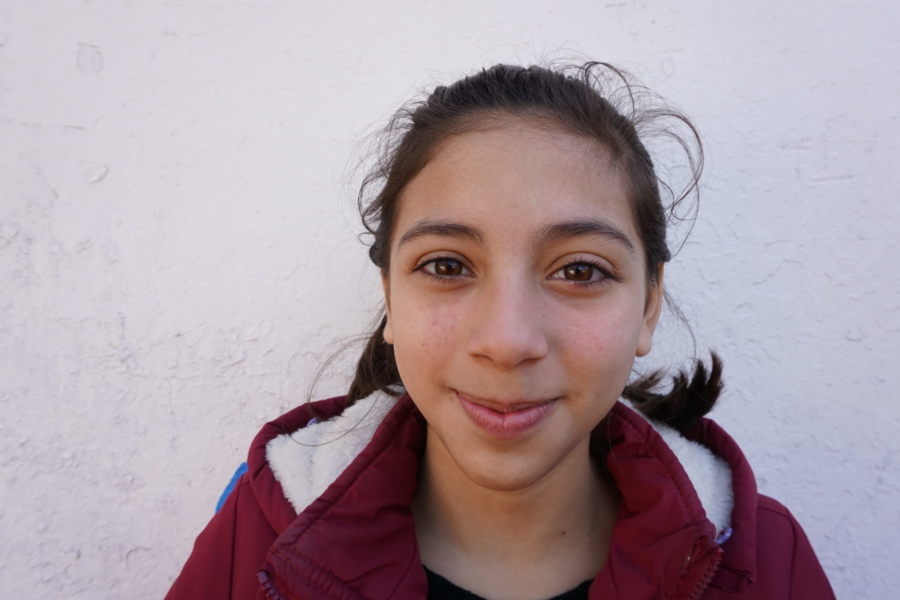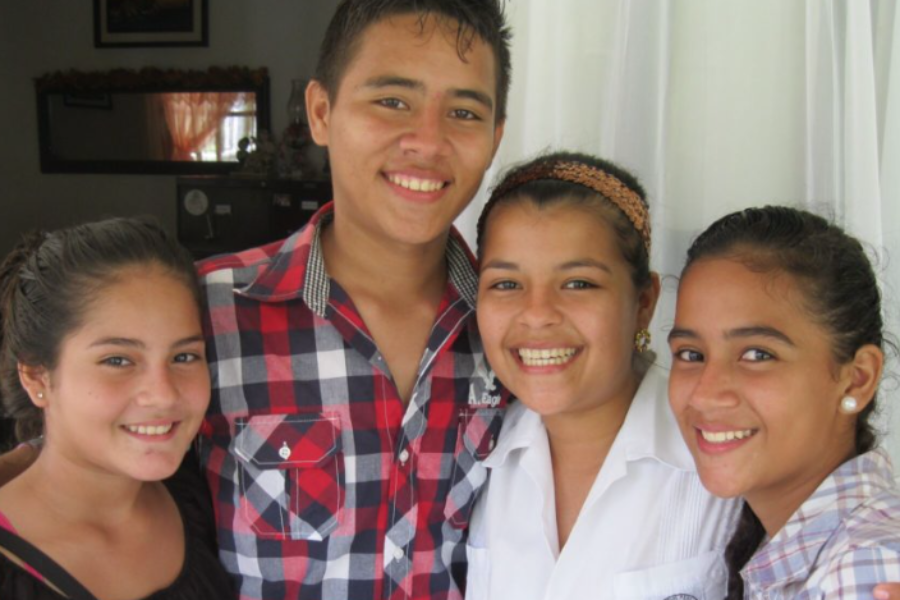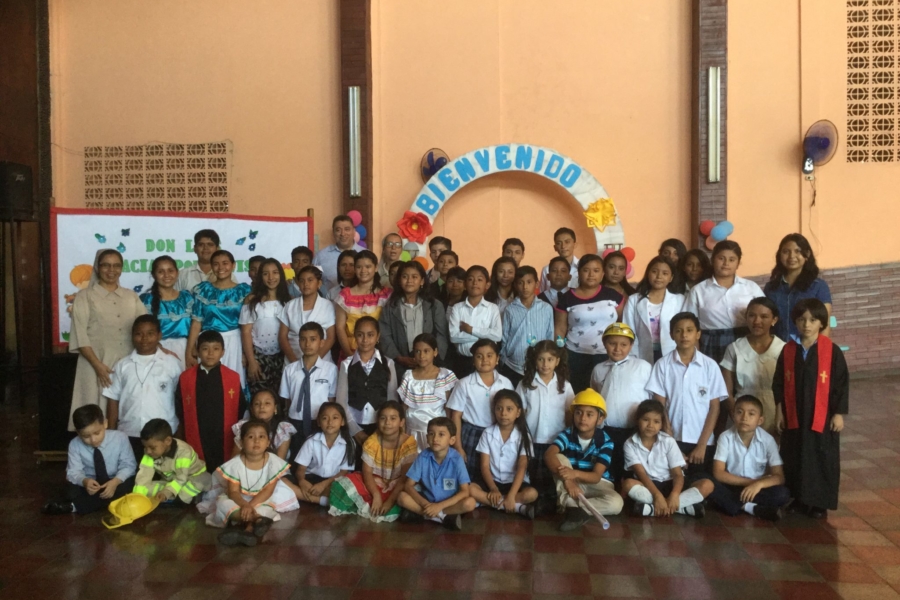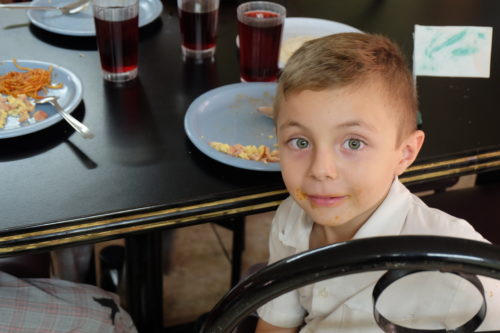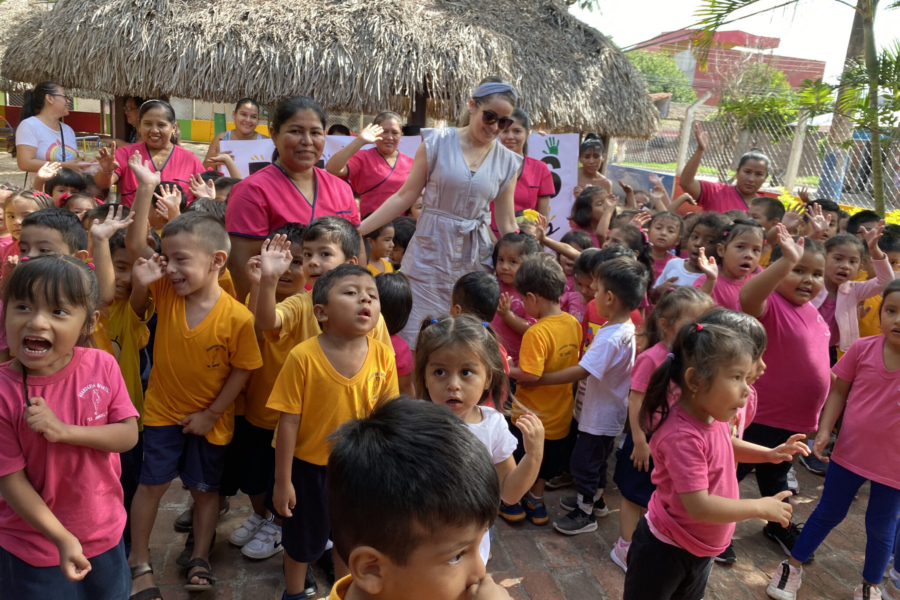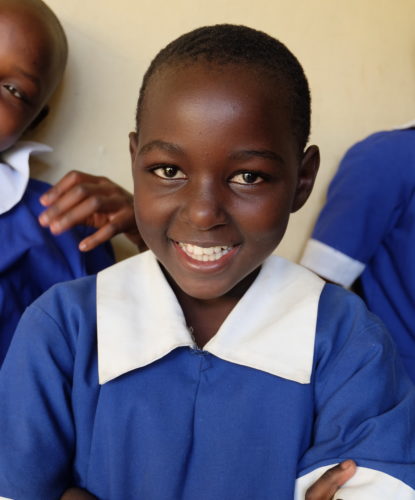In Central America, we work in Costa Rica, Nicaragua, El Salvador, Honduras, and Guatemala to give children in need a chance at a brighter future. Your support of children in these countries helps to provide them with food, clothing, school supplies, and hygiene items. In addition, Children Incorporated funds feeding programs, and we assist unsponsored children through our Shared Hope Fund. We also support skills training programs to increase chances for employment for children and their parents, so that their financial situations may improve.
Here at Children Incorporated, we know that sponsoring a child in need is extraordinarily rewarding, so we want to provide you with a guide to walk you through the process.
Information about the countries in Central America in which we work
Central America is full of beauty, but it is plagued by political, social, and economic issues that are depriving children of the basic needs they deserve, keeping them from obtaining a good education. As such, we want to highlight information about each of the Central American countries in which we work, to show you not only what the countries have to offer with regard to culture, landscape, and history, but also what they lack in infrastructure — the reasons for which we affiliate with projects in each of these nations, in order to support their children in need.
About Costa Rica
Situated on the Central American Isthmus, Costa Rica is a land rich in natural beauty, with tropical rainforests, volcanoes, and lakes. It shares borders with Nicaragua to the north, Panama to the south, the Caribbean Sea to the east, and the Pacific Ocean to the west. Despite its status as one of the most stable, prosperous, and progressive nations in Latin America – and one of the most eco-friendly in the world — Costa Rica struggles beneath a threatened economy and social unrest. Its lenient immigration laws invite a flood of immigrants from neighboring countries; as a result, the nation has seen a dramatic increase in unemployment, poverty, inflation, and crime.
About Nicaragua
Known as “the land of lakes and volcanoes,” Nicaragua comprises fertile Pacific lowlands, north-central highlands, and Atlantic/Caribbean lowlands. Nearly a fifth of the nation is set aside as protected parks and reserves — unique ecosystems teeming with a wide range of wildlife. Nicaragua has attracted an equally great variety of ethnicities. Indigenous peoples, Europeans, Asians, and people of Middle Eastern origin all call this breathtaking land home. Nicaragua’s wealth of natural resources and rich culture, however, belie the deprivation in which most of its residents live. This largest Central American nation is also the region’s most destitute — and the second-poorest country in the Western Hemisphere — riddled with natural disasters, political instability, and widespread poverty and underemployment, with the vast majority of its workers earning less than two dollars a day.
About Honduras
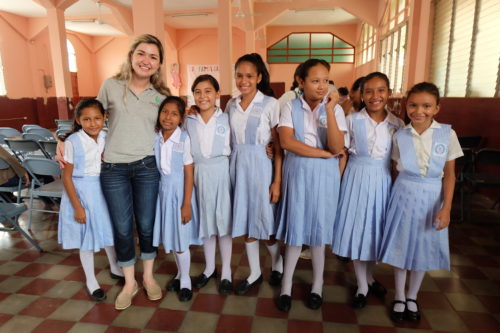
We support thousands of children in need in Latin America every year.
Nestled in northern Central America, Honduras is home to a variety of Mesoamerican peoples — most notably, the Maya. This ecologically diverse land — with its rainforests, cloud forests, savannas, mountain ranges, and barrier reef system off the northern coast — teems with life. Its wealth of natural resources is equally impressive, and includes an assortment of minable minerals, as well as agricultural exports such as coffee, tropical fruit, sugar cane, and lumber. Moreover, its growing textiles industry serves an international market. The nation’s wealth of natural beauty and resources, however, belie the dire poverty in which its people live. In fact, Honduras holds the unfortunate distinction of being one of the poorest nations in Latin America. This is due, in part, to its longstanding political instability; social strife, including the world’s highest murder rate; and economic issues, which include fluctuating export prices, rising inflation, and unemployment. Other contributing factors are frequent natural disasters, like hurricanes, mild earthquakes, and flooding; disease; and inadequate education, which results in high rates of illiteracy.
About El Salvador
Abundant in rivers, lakes, and fertile tropical farmland, El Salvador’s wealth of natural beauty traverses a vast central plateau, bordered by Pacific coastal plains to the south and rugged mountains to the north. For centuries, several Mesoamerican nations called this land home, including the Lenca, Olmec, Maya, and Pipil/Cuzcatlec. However, this smallest and most densely populated Central American country is particularly susceptible to natural disasters, such as earthquakes and volcanic eruptions, and it has been plagued by chronic political and economic instability for more than a century. High unemployment rates, rising inflation, organized crime, and a soaring birthrate leave many Salvadorans to live in abject poverty. The nation’s capital, San Salvador, is no exception to these maladies.
About Guatemala
Located just southeast of Mexico, Guatemala is the most populous country in Central America. Its spectacular mountains boast a wealth of natural resources and stunning biodiversity. For centuries, this land served as the core territory of the renowned Mayan civilization. Following two centuries of Spanish colonization, Guatemala gained its independence in the early nineteenth century, only to endure another 150 years of political instability and civil unrest.
Additionally, this area is prone to devastating natural disasters, such as earthquakes, volcanic eruptions, and hurricanes, which cause mudslides and flooding. Despite recent economic growth and successful democratic elections, Guatemala still struggles with widespread poverty, illiteracy, crime, and high rates of unemployment and underemployment.
Most Frequently-asked Questions About Sponsoring a Child in Central America
Here at Children Incorporated, we know that sponsoring a child in need is extraordinarily rewarding, so we want to provide you with a guide to walk you through the process.
In order to make your decision as easy as possible, here you will find the answers to sixteen of the most common questions we receive about sponsoring a child in Central America.
-
What is sponsorship?
The sponsorship relationship enables an individual sponsor to help support a child in need by means of monthly contributions. Monthly sponsorship donations go towards providing basic necessities such as school supplies and tuition fees, food, clothing, and access to healthcare, among other services, so that a child living in poverty has the opportunity to overcome the barriers that keep them from attending school, getting an education, and succeeding in life.
-
What is the role of a sponsor?
A sponsor’s friendship and encouragement are priceless to a child in such circumstances. Indeed, many children value the relationships they establish with their sponsors as much as they value the financial support they receive from them. There is an opportunity to build a relationship between sponsor and child that can be quite profound.
-
How long can I sponsor a child in Central America?
Many children value the relationships they establish with their sponsors as much as they value the financial support they receive from them. There is an opportunity to build a relationship between sponsor and child that can be quite profound.
Typically, sponsorship lasts until a child turns eighteen years old, graduates from high school, or moves out of our service area. Due to the transient state of many families and the difficult circumstances of the regions where they reside, we cannot predict or guarantee how long a child will remain in our sponsorship program, though every effort is made to provide services to children for as long as possible.
When a child leaves the sponsorship program, another child is selected for you to sponsor that is equally in need, in the hope that you will accept the new sponsorship.
-
Who implements or administers the child sponsorship program?
Our program is implemented by on-site volunteer coordinators who are typically administrators at the sites with which we affiliate. Our coordinators have direct access to the children they serve at their schools, homes, orphanages, or community centers — and sometimes even on a daily basis. As such, they are familiar with the immediate needs and family circumstances of each individual child in their care.
-
Who most directly benefits from my financial support?
When you sponsor a child, the beneficiary of your support is your individual sponsored child. The families of children in our sponsorship program receive additional or indirect benefits from their child’s sponsorship, but our focus is the one child. Sponsorship is intended to address the unique and individual needs of each child so that his or her specific needs are addressed.
The child-focused approach to fighting poverty is distinctly different from the broader community development approach. By changing the life of one child, you are giving him or her the opportunity to break the cycle of poverty, which can eventually lead to the transformation of an entire community — and even a nation.
-
Will I receive updated information about my sponsored child in Central America?
Yes. You will receive updated information and updated photos, though the frequency may vary depending upon the child’s location. The typical progress report includes information about the child’s grade level in school, hobbies, and interests.
Children Incorporated is very proud of our reputation and reviews that recognize the work we are doing for children.
-
May I send packages to my sponsored child in Central America?
Due to high customs duties and the likelihood of loss, it is not recommended that you send packages to sites outside of the United States, as their receipt cannot be guaranteed. If you would like to send an additional gift, it is recommended that you send a monetary gift to our headquarters in North Chesterfield, Virginia.
-
May I write to the child I sponsor?
Yes! Corresponding with your sponsored child can be a delightful experience. Your sponsored child is encouraged to write to you as well.
-
What should I write about?
The children enjoy learning about the lives of their sponsors. Writing about your own family (children, grandchildren, brothers, sisters, etc.) is always a good place to start. The children also like to learn about your part of the world, what you do for a living, your hobbies and interests, and about any pets you may have.
-
Is it possible to visit my sponsored child in Central America?
It is possible to visit sponsored children; however, it is not guaranteed that all of the sites with which we affiliate are open to sponsor visits. Circumstances vary from area to area.
-
Are there reviews of child sponsorship organizations?
Yes. Before you choose an organization with which to sponsor a child, we highly recommend that you visit these websites to gain a better understanding of charity backgrounds and performances: Charity Navigator, GuideStar, Give.org, and Charity Watch.
Children Incorporated is very proud of our reputation and reviews that recognize the work we are doing for children. Visit the following links to see our ratings:
- Charity Navigator Four Star Charity
- GuideStar Gold
- Better Business Bureau
- Charity Watch
- Authorize.Net
-
What are the best child sponsorship organizations for sponsoring a child in Central America?
Well, we are obviously a little biased about this question; but as we mentioned above, we highly recommend that you visit the various websites that provide assessments and ratings of nonprofit organizations before you make any donations.
-
What are the pros and cons of sponsoring a child?
The pros: you get to make a fundamental difference in the life of a child in need, and the effects of your sponsorship can last a lifetime. There are no real cons to sponsoring a child, but as you follow the progress of your sponsored child, you may at times feel that you wish could do more.
-
How much does child sponsorship cost?
Our sponsorship rate is $35 per month, and may be paid monthly, quarterly, semi-annually, or annually.
-
Will my sponsorship help a child go to school?
Yes — absolutely! We pride ourselves on our focus on providing educational resources for children.
-
Are there non-religious sponsorship organizations?
Yes, there are many great charitable organizations, both religious and non-religious, that provide assistance to children in Central America. Children Incorporated is a non-religious charitable organization.



